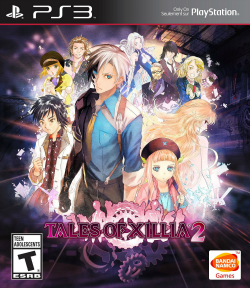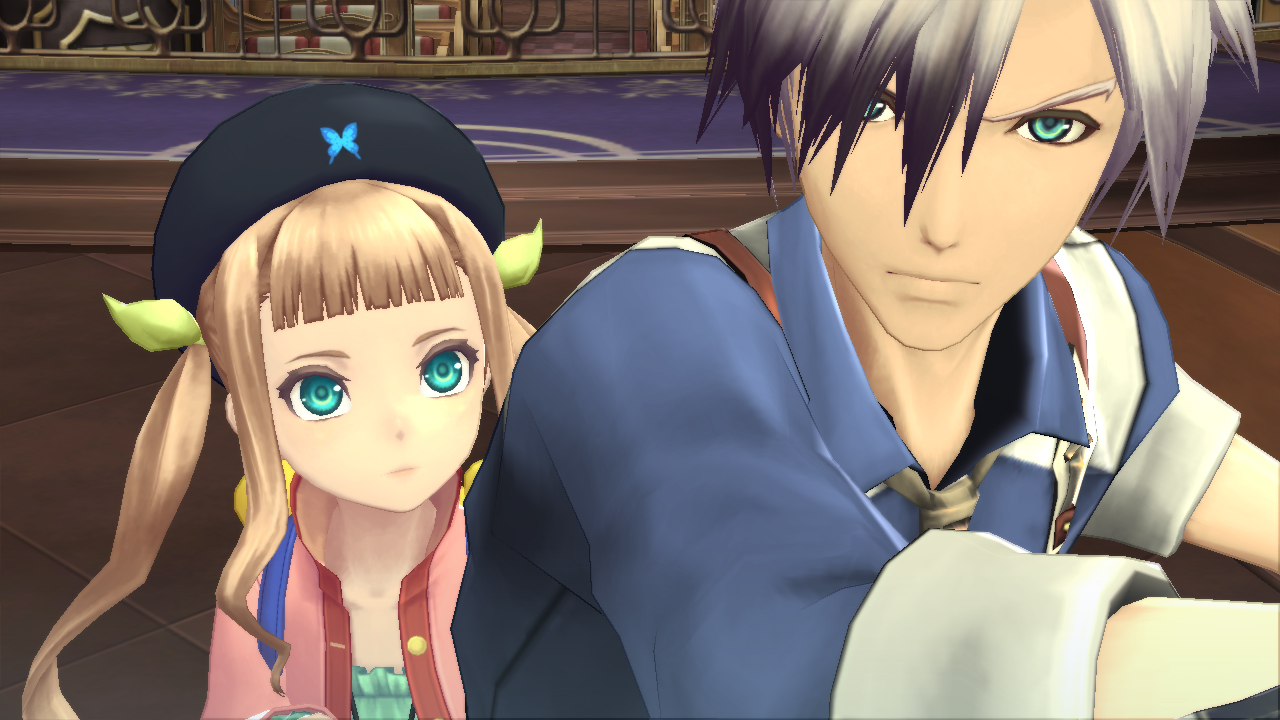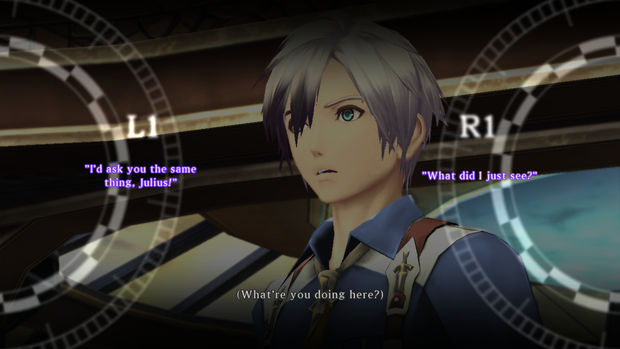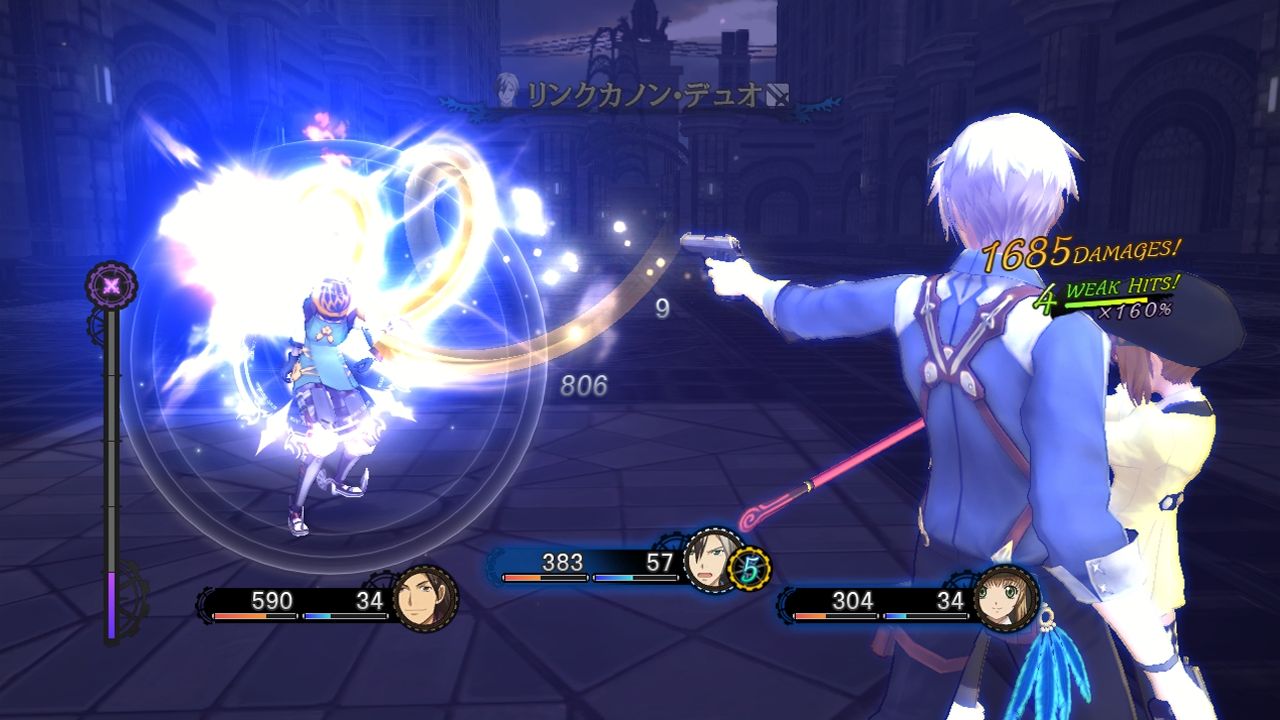Tales of Xillia was a huge departure for Bandai Namco’s Tales franchise. It’s sequel continues that trend in a new way, introducing mechanics and elements not only foreign to the Tales series, but also to most JRPG franchises.
Pushing to make completely new experiences unlike any other in the long-running franchise, Tales of Xillia 2 introduces the idea of a silent protagonist that makes Dragon Age-like choices throughout his journey. Ludger, the new character for this sequel, and his companion Elle join the cast from Tales of Xillia on a new adventure that picks up one year after the events of the first game. The result is a very tragic story that plays out in an almost Shakespearean way. The narrative through Xillia 2 is beautiful and tells an interwoven story of friendship and self-sacrifice. Many of the turns in the narrative had me taken back by the decisions the story team decided to make. Any fans of the first game will have a lot here waiting for them, and will see how the world ended up after the climactic ending of of Xillia.
That’s the real crux of Tales of Xillia 2: its two concurrent stories for the player to experience. One is the continuation of what happened at the end of the first game. It’s told through optional side missions that serve as major side stories to Ludger’s journey, and continues bit by bit as eight separate series’ of quests for each of the other party members. With the two antagonists from the previous game returning as main party members in Xillia 2, it gives you an entirely new perspective on the events of the first game and some of the motivations behind its conflicts.
This is an aspect where Xillia 2 really shines. Spending time with the characters from the first Xillia is excellently executed. You can almost immediately see the growth that has spurned them onto new journeys in their lives. Many of the returning characters have really improved on what they sought to in the first game, which gives Xillia 2 the vibe of a truly effective sequel. Honestly, it harkens back to Mass Effect 2 in a lot of ways, what with character-specific side missions and demonstrating real growth between both entries in the series. These character missions also allow you to build affinity with your characters, a system that only goes up, you’ll never lose this affinity. This opens up new “bonus scenes” and dialogue between Ludger and the party members on the main story missions, paying off almost immediately. It’s actually fantastic and feels like there is growth between Ludger, the new guy, and the rest of the original Xillia cast.
The other narrative in Xillia 2, which could be considered concurrent but completely separate from what I’ve already mentioned, is Ludger’s personal story, the actual plot of Xillia 2. If you haven’t played the first Xillia, I doubt you’ll get near as much enjoyment from the heavily-referential, character-based side missions, but Ludger’s tale involves wholly new characters with himself at the center. The story is driven by entirely binary choices, all of which seem less world-shattering than something in say, Mass Effect, but affect how the people of your party and this world percieve you. It’s personal, and it feels personal instead of like you’re making decisions for a character you aren’t really attached to. Your choices define your Ludger, and it may not be as satisfying as changing the ending, but it drastically changes how you get there emotionally. It’s effective in that regard, but the game will only end one of three ways, so seeking some greater deviation is fruitless.
Ludger’s story revolves around ‘Fractured Dimensions,’ types of alternate timelines of sorts that only the Kresnik’s, Ludger’s ancestry, can destroy. Their existence is draining the life out of the world, and they must be subdued long enough for a more permanent solution. This all ties directly into Ludger’s family and who he is, as a person. The reality of the situation is you have to destroy these dimensions, which are accurately portrayed as their own worlds with millions of people in them. It ends up pushing Ludger into a moral grey area, since the members of his family line are the only ones who can complete this mission. Sometimes this grey area meets heavy tropes that aren’t effective, but at others the destruction of alternative versions of your world end in surprising and poignant ways.
In order to create a new pace of gameplay while moving from one Fractured Dimension to the next, or one story beat to the next, Xillia 2 adopts a noir-style storytelling format. You’re gravely wounded at its beginning and are thrown into an insurmountable debt in order to recover. From there, you have to pay off portions of your debt between main chapters where the narrative is progressing in order to continue the story. The systems surrounding this are basically a series of jobs and the new character-based missions that I mentioned earlier, which are accessible between chapters.
Unfortunately this ends up hurting the tempo instead of helping it. Whereas most JRPGs have you going to new areas and collecting new items and loot along the way, when you finish a chapter in Xillia 2, leagues of new areas open that are then populated with the inane jobs from the job board. These may include killing eight monsters, finding four pieces of garbage in a certain area, or something else completely “fetch-questy”. Almost all these areas are returned and recycled from the first Xillia, so there really isn’t much new to see here. Plus, once you have spent hours grinding up the money to pay your debt, the menu to pay it will pop-up anytime you do anything, essentially forcing you to pay off what you can even when you don’t have to or are in a main chapter. It ends up being intrusive and annoying, and though you don’t really have to worry about money later on in the game, it will still pop up every second to drain funds away from useful weapon upgrades and items. It just comes off as a completely artificial way to stop-gap progression, and serves no real purpose other than to be incessantly annoying. Seriously: it murders the pacing of this game.
On top of that, many of the leveling mechanics from Xillia which acted as new and fun systems in the past have either been removed or completely changed. Leveling up now acts as simple stat-buffs, and the Lilium Orb leveling system has been removed in favor of a new Allium Orb one. For those who remember the Lilium Orb system, you were given a web you could spend experience to expand and earn new skills, stat increases, and abilities. Here, you just have to frequently change orbs with all nine of your party members to unlock new skills and powers for your team. It may be equally as unique as the system before it, but it’s not as fun, and feels tedious changing out orbs for your massive party so frequently. It just doesn’t give you the same sense of personal evolution as specifically choosing the skills, stats and abilities as you did in Xillia.
On the plus side, a new combat system has been added, but only for the main character Ludger. With him, you can switch between three different weapons, something unprecedented for the franchise. Where Xillia already had by far the best combat in the series, this improves on it even more, giving a true Devil May Cry feeling to every encounter. By switching from dual blades, to the guard breaking sledgehammer, and then to dual pistols for ranged-play, Ludger singularly feels like three unique Tales characters, and it’s awesome and fluid.
Closing Comments:
Tales of Xillia 2 is an excellently effective sequel, delivering on both an evolution of the previous narrative and an entirely new one altogether. Unfortunately, it is muddled by terrible pacing from a completely arbitrary debt system, and the awkwardness of a silent protagonist that feels ‘forced in’. Regardless, it’s held up by great character work, funny dialogue, and the best combat system the franchise has seen to date. This is definitely a game made for those of us who played Tales of Xillia.









